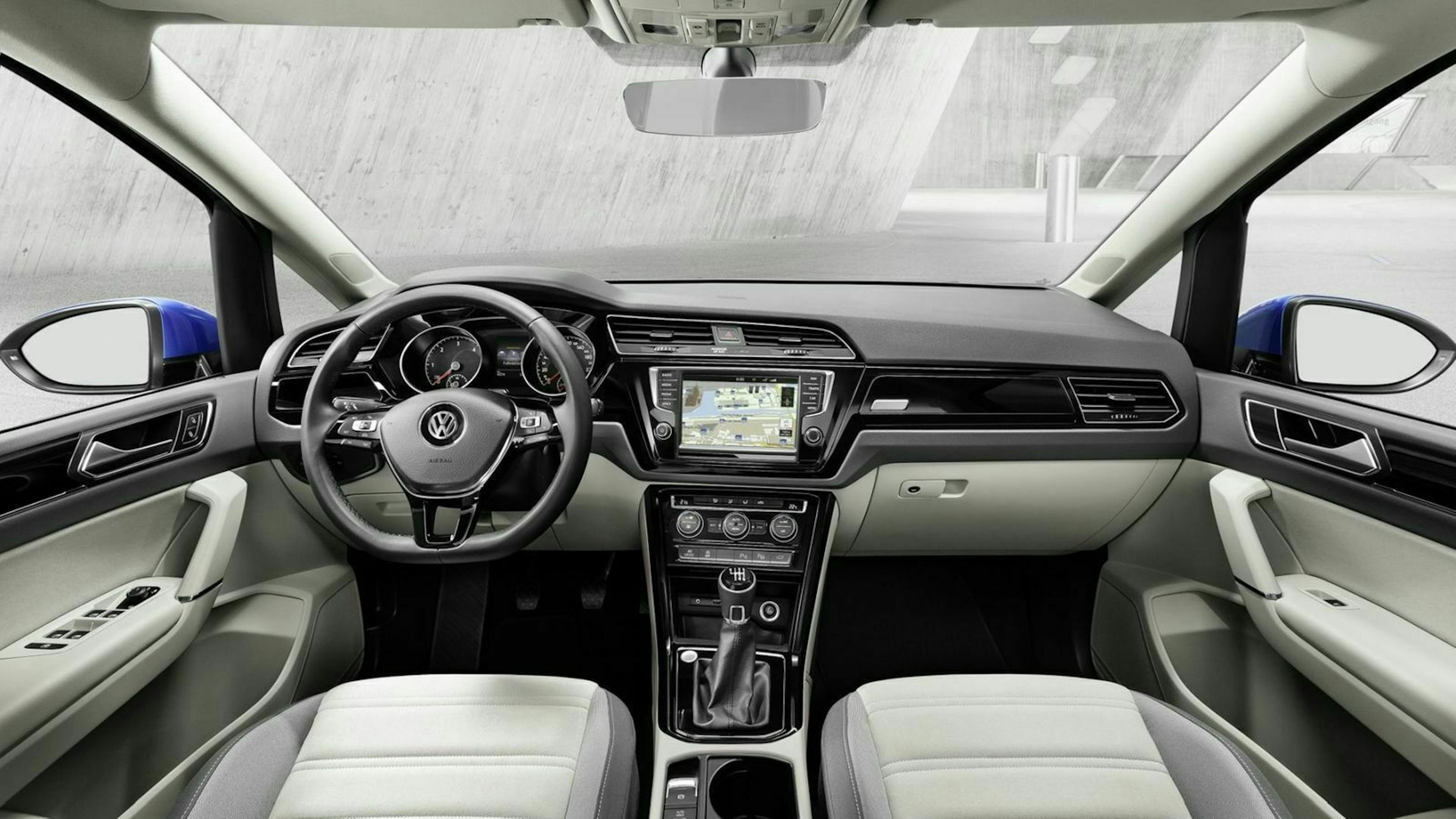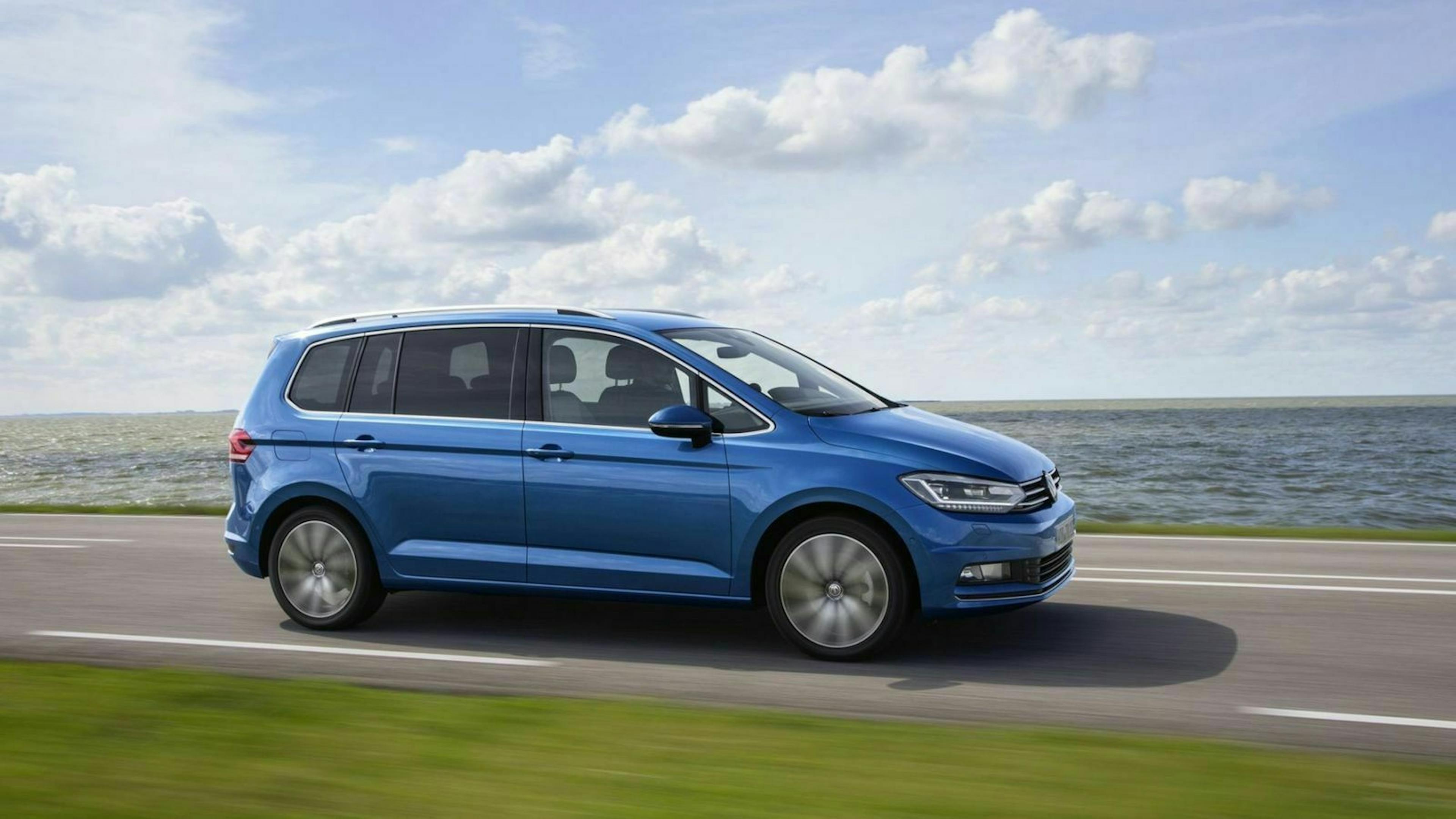VW Touran 2 (since 2015): Used car buyer's guide
The genre is on the decline. Strictly speaking, the VW Touran is the last real compact van in today's new car range. Less strictly speaking, the Renault Scénic and Peugeot 5008, which have been spruced up with SUV stylistic devices, can still be counted. On the used market, the Wolfsburg car competes with other models such as the Opel Zafira, Toyota Verso, Mazda5 or Ford Grand C-Max. What the VW Touran in the second generation has ahead of them: It will be launched on the market at the end of 2015 at a time when the others are already slowly giving up and therefore offers more modern technology. Above all, however, it offers the classic van virtues: an elevated seating position, plenty of space and a lot of variability. A real family car, in other words. And one that is achievable: A good five years after the start of production, there is a wide range of well-maintained, young used cars on the used market.
Body and interior
The most important change compared to its predecessor: VW is placing the second Touran on the current Golf platform, the so-called modular transverse matrix (MQB) of the VW Group. This allows the engineers to make more than decent use of space. In addition, they stretch the length of the second Touran generation by 13 centimetres to 4.53 metres. The wheelbase grows by 11.3 centimetres to 2.79 metres.
This allows for a generous amount of space for passengers and luggage. The VW Touran rolls in front of the garage either as a 5 or 7 seater, but always with individual seats. In the standard seating configuration with five seats, it offers a generous 834 litres of luggage compartment volume, and with the rear bench backrest folded down, it is 1,980 litres of luggage compartment volume. Even with seven seats, there are still between 137 and a maximum of 1,857 liters. The available space is also easy to use: When the rear seat backrests are folded down, there is no longer a step in the luggage compartment thanks to an intermediate floor, unlike its predecessor. The seats in the second row can also be moved.
A small disadvantage compared to vans with sliding doors: VW only offers the Touran with classic doors. The interior design is rather sober, as is typical for VW, but highly suitable for everyday use. Many pitfalls in the operation do not wait for the user, the workmanship is convincing.

Motors and drive
There are no electrified drives in the Touran, VW relies on the well-known TSI gasoline engines with turbocharging as well as the TDI diesels. VW is not launching a natural gas variant, and all-wheel drive is also no longer available in the second Touran.
At market launch, VW will initially offer a 1.2-liter four-cylinder gasoline engine with 110 hp and a 1.4-liter TSI with 150 hp. In 2016, a 1.8-liter gasoline engine with 180 hp will be added to the engine range. According to the standard, the consumption values are between 5.5 and 6.2 liters on average. The diesel range is largely the same as that of the petrol engines in terms of performance. The 1.6 TDI has an output of 110 hp, while the 2.0 TDI achieves 150 hp or 190 hp, depending on the power level. The diesel engines, which are particularly recommended for long distances, consume an average of 4.4 to 4.8 liters of diesel per 100 kilometers according to the standard.
All diesels in the VW Touran II meet at least the Euro 6 emission standard. VW will introduce the standard for the 2.0 TDI (122 hp) in October 2019. The 150 hp diesel will meet the standard from November 2018, the 190 hp diesel from January 2019. For older models, used car buyers should make sure that the diesel recall was carried out due to manipulation software. Otherwise, however, the vehicle cannot usually be registered anyway.
Positive: All engines in the Touran shift with at least six gears. The basic transmission is a manual six-speed transmission, the 150 hp versions shift with a seven-speed dual-clutch transmission (DSG) for an extra charge. The most powerful models always come with DSG automatic transmission as standard. From 2018, VW will thin out the engine range. The diesel versions with 122 and 150 hp remain. The only gasoline engine currently offered is a 150 hp 1.5-liter TSI with particulate filter.
All engines are recommendable in principle, they no longer belong to the TSI generations, some of which are fraught with problems. However, the 1.0-liter three-cylinder gasoline engine, which was offered for a short time in 2019, has to struggle with the large, heavy Touran. It can be a little more power.
Equipment and safety
With the switch to the MQB platform, modern infotainment, safety and assistance systems are being introduced into the VW compact van in the Touran II. The range of assistance systems is large, provided that you choose the higher comfort levels and the first owner was willing to order the optional helpers. Used car buyers can also look for special models such as "Join" or "Sound". These offer many equipment details.
In principle, VW will initially offer the Touran in the familiar Trend, Comfortline and Highline trim levels. Since 2019, only Comfortline and Highline have been available. The basic Trend equipment cost around 23,400 euros at market launch and requires some sacrifice from the buyer. You can already see it from the outside: alloy wheels or roof rails are only part of the standard equipment from the Comfortline onwards. A useful extra outside the city are LED headlights. However, these are usually only found in Highline Touran.
When it comes to safety, the Touran requires hardly any compromises with its modern assistance technology and its current platform. In the NCAP crash test, the 2015 Touran achieved a five-star rating. The only downer for families: VW only offers airbags that protect the rear seat passengers for an extra charge. So they are not in every Touran.

Quality and problems
The first Touran 2 are now driving for the second time for the main inspection. So far, the model has not attracted negative attention there and is much more stable than the first-generation VW Touran. He is not spared a typical van suffering: At the chassis inspection point, small abnormalities on the axle springs are shown. The high weight of the van puts more strain on the chassis than is the case with a Golf. Models with high mileage can also show the first relevant brake wear. If oil leakage is a problem, fixing it can be expensive. Work on TSI engines is associated with a great deal of effort due to the many integrated components. The family van masters the steering and light points without any problems.
Offer and prices
Conclusion: The VW Touran shows that classic family vans have not yet lost their raison d'être. Variable individual seats, a large luggage compartment and a solid range of engines make the Touran a practical everyday companion. The range is pleasingly large: around 7,500 second-generation Tourans will be for sale at mobile.de in February 2021. The range is divided almost equally between gasoline and diesel engines, automatic models are more common than manual transmissions.
The mileage of cheap Touran is usually quite high, often these are former taxis. Such vehicles cost 5,000 to 7,000 euros. For a Touran with a low six-figure mileage and equipment suitable for everyday use, 10,000 to 15,000 euros are more likely to be due.
